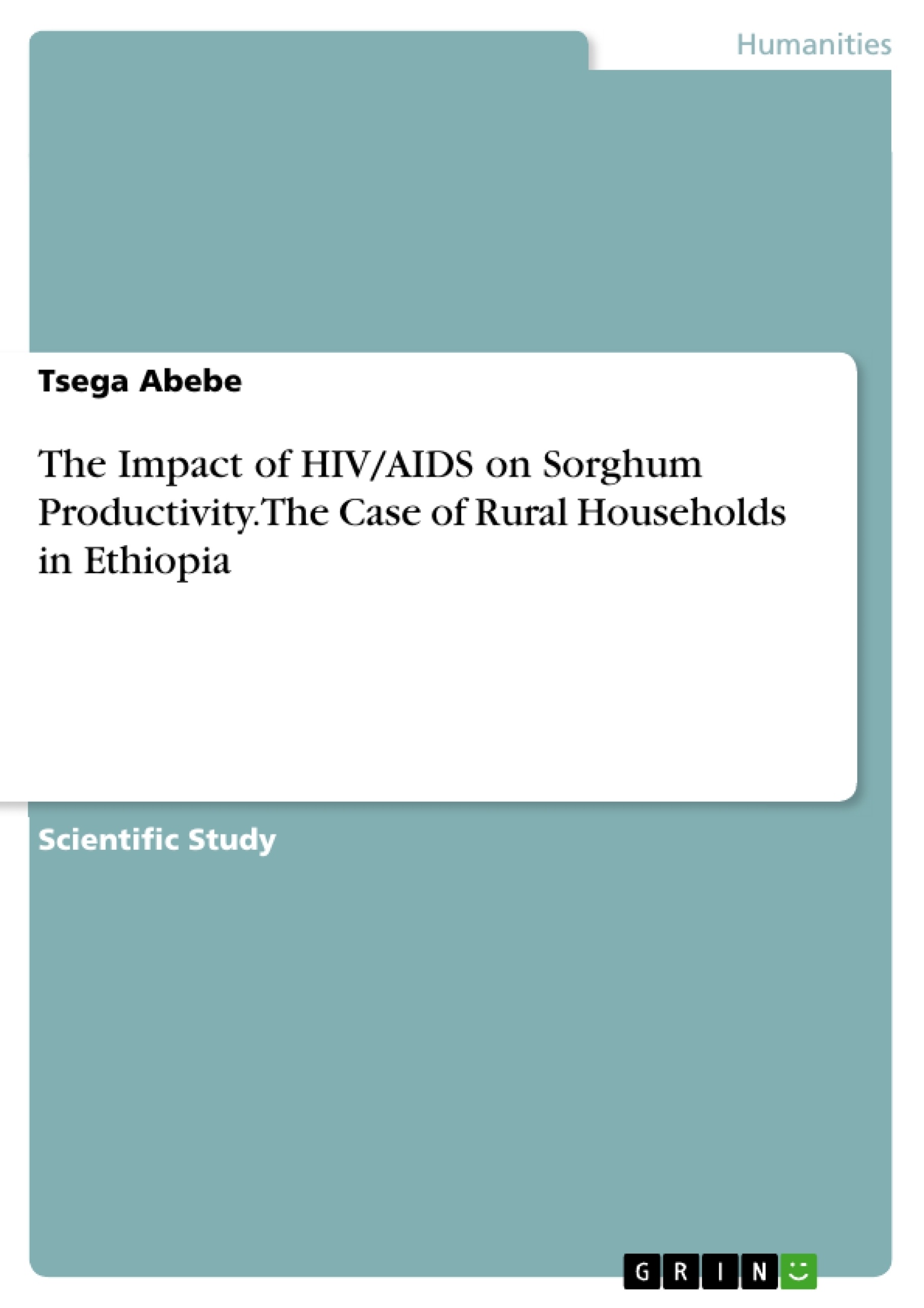This study was initiated with the specific objectives of assessing the impact of HIV/AIDS on sorghum output. Cross-sectional data collected from a total of 120 respondents were used in this study whereby 40 were affected households and 80 were non-affected households. Cobb-Douglas (CD) production function was used to estimate the productivity difference in sorghum output between affected and non-affected households.
The agricultural sector in general and sorghum production in particular in the rural part of Ethiopia is characterized by low productivity which mainly uses labour as an input. However, the availability of the labour force is greatly reduced in both quantity and quality due to the prevalence of HIV/AIDS.
Inhaltsverzeichnis (Table of Contents)
- Abstract
- Introduction
- Methodology
- Specification of the model
Zielsetzung und Themenschwerpunkte (Objectives and Key Themes)
The primary objective of this study is to assess the impact of HIV/AIDS on sorghum productivity in rural households in Babile District, Ethiopia. The study analyzes the productivity differences between HIV-affected and non-affected households using the Cobb-Douglas (CD) production function. The research aims to understand how HIV/AIDS affects sorghum output and identify potential mitigation strategies.
- Impact of HIV/AIDS on Sorghum Productivity
- Productivity Differences between Affected and Non-Affected Households
- Input Endowment and Health Impact on Sorghum Output
- Mitigation Strategies for HIV-Affected Households
- Policy Implications for Enhancing Sorghum Production in Affected Areas
Zusammenfassung der Kapitel (Chapter Summaries)
- Abstract: This section provides a concise overview of the study's objectives, methodology, and key findings. The study aims to assess the impact of HIV/AIDS on sorghum productivity in rural households in Babile District, Ethiopia. The findings indicate that affected households have lower sorghum output due to both health impact and input endowment differences.
- Introduction: The introduction sets the context for the study by highlighting the challenges faced by rural households in Ethiopia due to the prevalence of HIV/AIDS. The study focuses on the impact of HIV/AIDS on sorghum production, which is a vital crop in the region. The section also discusses the need to address the knowledge gap regarding the impact of HIV/AIDS on smallholder sorghum production.
- Methodology: The methodology section describes the sampling technique used to collect data from 120 respondents, including both affected and non-affected households. The study employed a multistage purposive and stratified random sampling technique. The section also outlines the procedures for selecting the sample, including the identification of affected households through consultation with health workers and community leaders.
- Specification of the model: This section details the econometric model used to analyze the data. The study utilizes the Cobb-Douglas (CD) production function to assess the magnitude of yield loss due to HIV/AIDS. The section explains the model's components, including input variables, output elasticity, and the use of dummy variables to account for the effects of HIV/AIDS. The section also discusses the statistical tests used to determine the significance of the model's findings.
Schlüsselwörter (Keywords)
The main keywords and focus topics of this research include HIV/AIDS, sorghum, affected and non-affected households, Cobb-Douglas production function, productivity, input endowment, health impact, and mitigation strategies. The study examines the impact of HIV/AIDS on sorghum productivity in rural Ethiopia, analyzing the factors contributing to productivity differences between affected and non-affected households. The research highlights the importance of addressing the health and economic challenges faced by HIV-affected households in rural communities.
- Quote paper
- Tsega Abebe (Author), 2012, The Impact of HIV/AIDS on Sorghum Productivity. The Case of Rural Households in Ethiopia, Munich, GRIN Verlag, https://www.grin.com/document/993266



